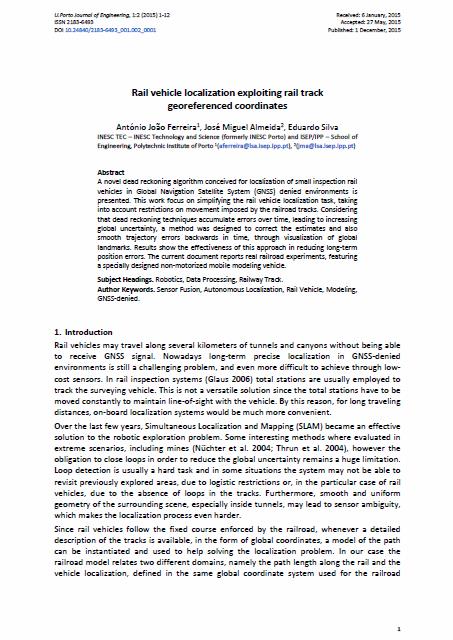Rail Vehicle Localization Exploiting Rail Track Georeferenced Coordinates
Main Article Content
Abstract
A novel dead reckoning algorithm conceived for localization of small inspection rail vehicles in Global Navigation Satellite System (GNSS) denied environments is presented. This work focus on simplifying the rail vehicle localization task, taking into account restrictions on movement imposed by the railroad tracks. Considering that dead reckoning techniques accumulate errors over time, leading to increasing global uncertainty, a method was designed to correct the estimates and also smooth trajectory errors backwards in time, through visualization of global landmarks. Results show the effectiveness of this approach in reducing long-term position errors. The current document reports real railroad experiments, featuring a specially designed non-motorized mobile modeling vehicle.
Downloads
Article Details
Authors who publish with this journal agree to the following terms:
- Authors retain copyright and grant the journal right of first publication with the work simultaneously licensed under a Creative Commons Attribution License that allows others to share the work with an acknowledgement of the work's authorship and initial publication in this journal.
- Authors grant the journal the rights to provide the article in all forms and media so the article can be used on the latest technology even after publication and ensure its long-term preservation.
- Authors are able to enter into separate, additional contractual arrangements for the non-exclusive distribution of the journal's published version of the work (e.g., post it to an institutional repository or publish it in a book), with an acknowledgement of its initial publication in this journal.
- Authors are permitted and encouraged to post their work online (e.g., in institutional repositories or on their website) prior to and during the submission process, as it can lead to productive exchanges, as well as earlier and greater citation of published work (See The Effect of Open Access).

